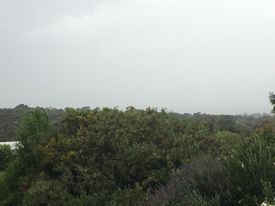
October was wet by any measure. By our 11 year measure, it was the wettest since we arrived at the Eco Village, with a reading of 71.0mm, taking our YTD figure to 456.0mm. The question on everybody’s lips is, “Can we get to 500.0mm for 2022?” It’s going to be tight, possible but not probable.
It rained on 14 of our 31 days for October, the highest daily reading being 25.0mm on 5th of October. That gives us two readings go 25.0mm or above for the year so far. We had 38.0mm on the 30th of May this year.
So, how did we compare with other years from 2011?
Year October Year to Date
2022 71.0mm 456.0mm
2021 48.5mm 449.0mm
2020 53.5mm 456.0mm
2019 25.0mm 329.5mm
2018 14.5mm 282.5mm
2017 19.5mm 464.0mm
2016 55.0mm 598.0mm (that’s the year we got 670.0mm for the year)
2015 2.0mm 393.0mm
2014 Nil 345.0mm
2013 9.0mm 469.0mm
2012 14.0mm 476.0mm
2011 13.0mm NA
Well, there it is the best October since 2011.
We are now in the last period of Wirltuti in the Kaurna calendar. It’s traditionally a time of the weather heating up, thunder both dry & wet, lightning & dry breezes. Lots of Kangaroo & Yabbies to eat. Controlled low heat burning in the foothills & birds fly north if the Murray Darling Basin floods. Sound familiar. Not bad for no computers, no written records. What a wonderful people they are. Next report we’ll be entering the Warltati period which goes through into our March.
Did you know that if you have a house of 200 square metres & we get 1.0mm of rain you get 200.0 litres of water in your tank each time it rains. We sized our home tank using this formula as a guide & chose a 50,000 litre tank. It has been full since mid August & continues to remain full even though we a constantly drawing of water for our use, given our good falls of rain lately. The question is, “Can we all capture more rain water than you do?”
The other thing one can consider is Gutter Guard. This helps to keep the collected water clean. It is recommended that metal guard is used as it is bushfire proof, whereas plastic will burn if embers lodge on your roof in a fire. Embers can travel up to a kilometre or more in a fire with a good wind behind it. That’s from Willunga Creek to our north, well into the Sports Park over Port Road.
Another tip to get clean water is to put on a first flush system of at least two metres, to capture silt from your roof. Finally, get a couple of common garden sieves (fine & larger) to place over your input sieve. These three sieves reduce muck going into the water considerably. Don’t forget to clean them at least monthly. If you’ve got any other tips let me know & I’ll put them on next month’s report.





